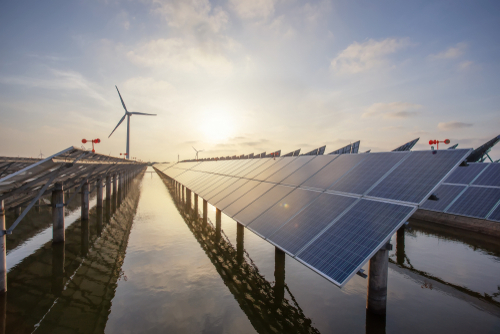Appalachian Power updates clean energy plan, requesting solar power purchase, purchase of Ohio wind facility

In its annual update to its clean energy plan, Appalachian Power last week requested to purchase a 143 MW wind facility in Ohio and the ability to purchase 204 MW of solar energy output from seven other facilities.
“Customers count on us to deliver a safe, affordable product to power their daily lives, homes, and businesses,” said Aaron Walker, Appalachian Power president and COO. “The plan presented to the commission provides reliable, clean energy for our customers as well as the added benefit of jobs and tax base for the communities where these projects are sited.”
These updates help the company comply with the Virginia Clean Economy Act (VCEA). They are the third such update since the VCEA was signed into law in 2020. The law requires the company to provide its customers with carbon-free energy by 2050. To that end, it must provide a yearly update to the Virginia State Corporation Commission on how it shall meet clean-energy targets. These targets include investments in solar, wind, energy storage, and the purchase of renewable energy certificates.
About 104 MW of the 204 MW Appalachian Power intends to purchase in solar capacity will come from facilities located in Virginia. Walker added that this power, coupled with the wind facility, should help reduce costs, reduce reliance on volatile energy prices, and support VCEA requirements.
Additionally, the plan, as filed, called for a nearly 8 MW energy storage project in southwest Virginia, comprised of two battery energy storage systems connected to Appalachian Power’s Glade-Whitetop distribution circuit. It would provide a temporary power source closer to customers on the latter half of the circuit’s reach, which includes a mountain range that can make repairs tricky.
At this time, the company has terminated plans for the Bedington, Firefly, Dogwood, and Sun Ridge solar facilities alongside developers due to a mix of development, permitting, and/or cost-related issues that arose. Partly related to this, though, and notable for consumers: the company’s latest proposal would decrease the monthly bill for residential customers by 58 cents per 1,000 kW hours used.
